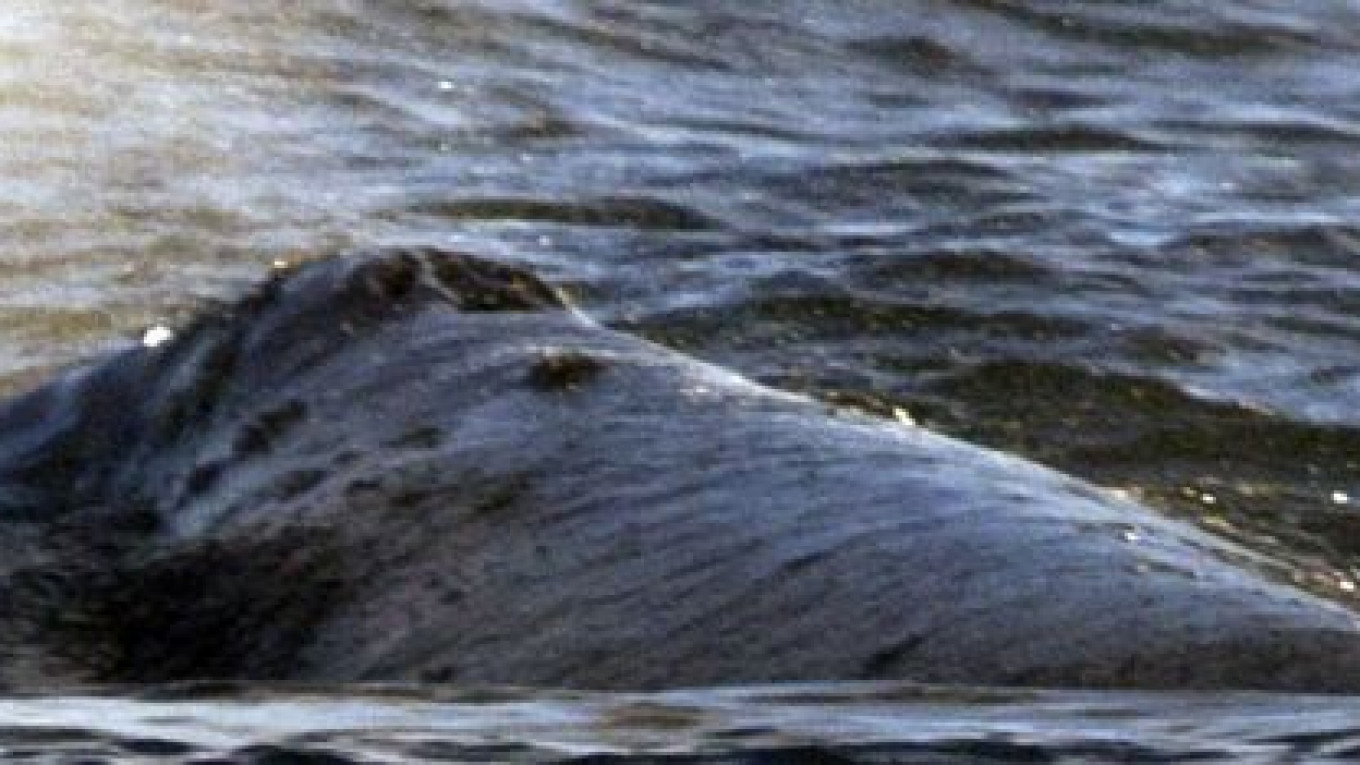ANCHORAGE, Alaska — An endangered western Pacific gray whale tracked from Russia to Alaska and along the west coast to Baja Mexico is on the move again, apparently preparing to cross the Pacific Ocean.
The 9-year-old western gray whale, dubbed Varvara, passed California, Oregon and Washington and was off the northwest shores of Vancouver Island, as of Saturday. She is moving about 160 kilometers per day.
She is expected to turn left to head back to feeding grounds off Sakhalin Island, said Bruce Mate, director of the Marine Mammal Institute at Oregon State University.
"That's going to be real exciting soon," he said by phone. "One of the big questions is, will she retrace the route she came on, or will she take a different route home?"
If she backtracks, Mate said, she will reinforce scientists' theory that gray whales learn migration routes from their mothers as they move from a calving area to the mother's foraging area.
"But if she takes some other route," he said, "then we're going to have to attribute even more navigational skill to her than we've done in the past."
Varvara and two other western gray whales have already changed what scientists thought they knew about the migration routes, with their deep-water crossing of the Pacific.
"We used to think of gray whales as near-shore oriented animals in the eastern North Pacific because that's how they moved along," Mate said. "It may be that that's largely an attribute of trying to stay as clear of killer whales as possible. That's certainly a strategy that mothers with calves use that we see in places where killer whales are abundant — moving to shore and defending toward the deep water is easier for moms with calves."
Another question that remains unanswered is whether whales off Sakhalin Island are a distinct population from eastern Pacific gray whales or an extension of the range of the latter, Mate said.
Western Pacific gray whales were hunted, and by the 1970s were thought to be extinct until a population was spotted off Sakhalin. Just 130 animals remain, but they face threats from shipping and offshore petroleum development. Whales have been killed by fishing nets set off Japan.
In contrast, California gray whales, also called eastern Pacific gray whales, are a recovery success story. Their numbers were decimated by whalers but are now estimated at 18,000. They were taken off the endangered species list in 1994.
Mate is part of an international research team that includes the National Marine Fisheries Service, the A.N. Severtsov Institute of Ecology and Evolution of the Russian Academy of Sciences, the Kronotsky State Nature Biosphere Reserve and the Kamchatka branch of the Pacific Institute of Geography.
The team in September 2010 attached a satellite tag to a 13-year-old male whale, named Flex, to find out where western grays spend winters. The whale shocked researchers by swimming east across the Bering Sea through Alaskan waters and then south off central Oregon, where the tag was lost.
Researchers last September attached tags to six whales. Four quit working before whales left Sakhalin Island, but in late November, Varvara and another female, named Agent, crossed the Sea of Okhotsk.
Traveling separately, they headed east across the Bering Sea toward Alaska, and both crossed the Aleutian Islands into the Gulf of Alaska in late December. Agent's tag stopped transmitting during the first week of January when she was two-thirds of the way across the gulf.
Varvara is the first western Pacific gray whale documented all the way to Baja Mexico, where most California gray whales breed and give birth. Scientists know Varvara did not give birth because she would have stayed in one place for four to eight weeks as the calf gained strength.
She was, however, tracked to all three major breeding and calving areas for eastern gray whales, and she may have found a partner. The whale's gestation period is about one year.
"In good years, females are alternately calving and breeding," Mate said. "Calving every other year is a normal calving interval for healthy adult females when the environment is doing well for them."
The satellite tags average 123 days on a gray whale and the longest documented is more than 380 days. Varvara's has been in place for 200 days. Mate hopes it will last for the crossing of the Pacific.
The Sea of Okhotsk is frozen and scientists would like to see if Varvara heads for the Kamchatka Peninsula or for waters off Japan to approach Sakhalin Island from the south, Mate said.
A Message from The Moscow Times:
Dear readers,
We are facing unprecedented challenges. Russia's Prosecutor General's Office has designated The Moscow Times as an "undesirable" organization, criminalizing our work and putting our staff at risk of prosecution. This follows our earlier unjust labeling as a "foreign agent."
These actions are direct attempts to silence independent journalism in Russia. The authorities claim our work "discredits the decisions of the Russian leadership." We see things differently: we strive to provide accurate, unbiased reporting on Russia.
We, the journalists of The Moscow Times, refuse to be silenced. But to continue our work, we need your help.
Your support, no matter how small, makes a world of difference. If you can, please support us monthly starting from just $2. It's quick to set up, and every contribution makes a significant impact.
By supporting The Moscow Times, you're defending open, independent journalism in the face of repression. Thank you for standing with us.
Remind me later.






